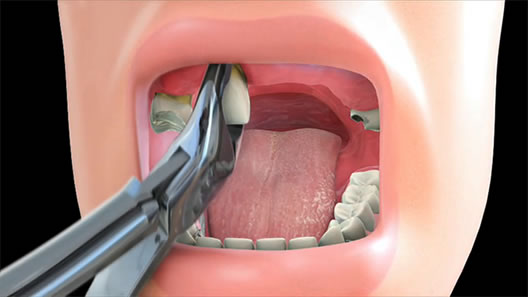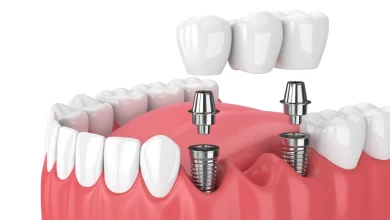How to Deal with Multiple Tooth Extractions and What to Expect

When you think of having your teeth removed for any reason, you probably imagine only one of them coming out at a time. However, if you have multiple tooth extractions that need to be extracted in the same dental appointment, it can feel like an overwhelming and scary proposition.
After all, how many times have you heard a horror story about someone undergoing dental surgery and coming out with none of their teeth? If you’re facing multiple tooth extractions at once, it’s normal to feel a little unnerved by the idea of losing all those teeth at once. After all, we tend to take our teeth for granted until they start causing us problems or are in danger of being irrevocably damaged.
What Happens During a Multiple Tooth Extraction Procedure?
When extracting more than one tooth at a time, it’s important to remember that dental surgeons are trained to extract teeth. They are experts in knowing how to remove your teeth without damaging your surrounding gums or other teeth. That being said, the procedure for removing more than one tooth at a time will likely be similar to your dentist’s normal tooth extraction procedure. In most cases, you will likely be given an oral sedative to help you feel relaxed and prevent you from feeling any pain during the procedure.
Your dentist may also numb your gums with a local anesthetic to ensure you don’t feel any pain. If your dentist uses a general anesthetic, he or she will likely place a breathing tube in your mouth to assist you with breathing throughout the procedure. Your dentist will then carefully remove each tooth using specialized instruments designed for tooth removal. He or she will also take care to remove any tissue and bone that is preventing the tooth from coming out. Once the tooth is removed, your dentist will put a small cotton wisp in the hole to control bleeding and place a small gauze bandage on the site.
Why Do You Need Multiple Teeth Extractions?
There are several reasons why you might need multiple tooth extractions to be at once. Some of the most common include:
– Tooth Decay – If a tooth is badly decayed, it may be easier and safer to remove it entirely and replace it with a dental implant or a bridge than to try and save it.
– Infection – If a tooth becomes infected or abscessed, the only option may be to remove it entirely to let the infection heal.
– Swelling and Pain – If you have swelling and pain in a tooth that can’t be treated with antibiotics, your dentist may recommend removing it to relieve the pressure.
– Impacted Wisdom Teeth – If your wisdom teeth are growing in sideways or impacted, your dentist may recommend removing them.
Why Is It Done at the Same Time?
There are a few reasons why two or more teeth are removed at the same time. The most common reason is that the teeth are impacted and growing in sideways so that they can’t be pulled out. Instead, your dentist will likely use a saw to cut into the gum and remove the tooth.
Another reason for multiple tooth extractions at the same time is if they are severely decayed or broken. In both of these cases, it’s often easier and less painful to remove both teeth at once than it is to remove one at a time.
What Can Be Done to Help You Feel Better?
If you have multiple tooth extractions at once, you may experience some swelling and pain in your gums and surrounding tissue. Fortunately, there are a few things you can do to help minimize any discomfort and swelling:
– Stay Hydrated – Hydrating with water and sports drinks can help minimize swelling. Avoid drinking caffeine and alcohol, which can increase swelling.
– Use an Ice Pack – Applying an ice pack to the site can help reduce swelling and any pain you may be experiencing.
– Try Pain Relief – You can take over the counter pain relievers such as ibuprofen or acetaminophen to reduce any pain or swelling you may be feeling.
– Avoid Strong Smells – Strong smells such as food or perfume can make any swelling worse.
Conclusion
When you have multiple tooth extractions at once, it can feel like a daunting experience. Thankfully, you can prepare yourself for the process by taking care of your teeth and gums before the procedure. It’s also important to remember that dental surgeons are trained in tooth removal and will do everything they can to make the process as painless as possible.
On the other hand, it’s important to know that you may experience some pain and swelling following the procedure. To help reduce the amount of discomfort you feel, make sure you are staying hydrated, using ice packs, and taking over the counter pain relievers as needed. Finally, don’t forget to schedule follow-up appointments with your dentist to make sure your gums are healing properly and there isn’t any remaining infection.
References:
1-Periodontal reasons for tooth extraction in an adult population in Jordan
Publishing Date: 17 December 2002
doi.org/10.1046/j.1365-2842.2003.00981.x
2-Platelet Rich Plasma to Facilitate Wound Healing Following Tooth Extraction
Publishing Date: JANUARY 01 2010
https://doi.org/10.1563/AAID-JOI-09-00063




